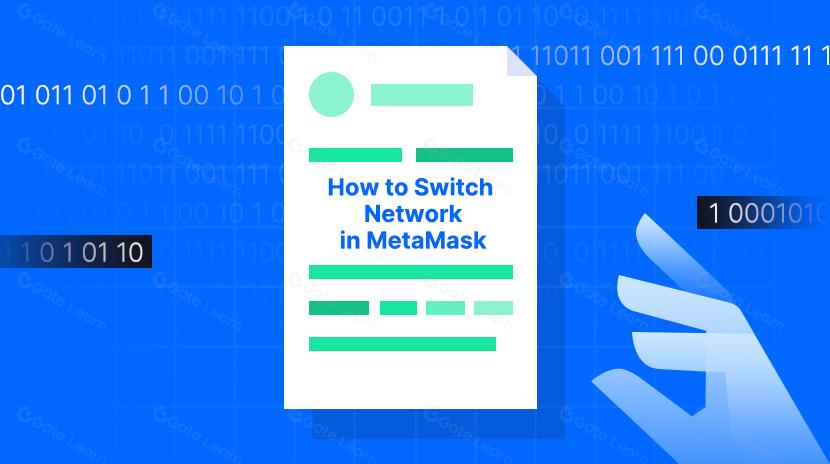Kembalinya Ethereum? Bisakah Usulan Staking ETF Bitwise Menebus ETH?
Bursa Saham New York (NYSE) telah mengajukan proposal kepada Komisi Sekuritas dan Bursa Amerika Serikat (SEC), mencari persetujuan untuk Bitwise Ethereum ETF untuk berpartisipasi dalam Ethereum staking. Tujuannya adalah untuk menawarkan investor yield tambahan sambil mendukung pertumbuhan ekosistem Ethereum. Meskipun sentimen pasar terhadap Ethereum tetap bearish, dan modal terus mengalir keluar, jika disetujui, proposal ini bisa menyebabkan pengetatan pasokan, likuiditas yang ditingkatkan, dan keamanan jaringan yang diperkuat—potensial menandai langkah signifikan menuju adopsi mainstream.
Di era di mana dunia kripto bersilangan dengan keuangan tradisional, tren pasar berubah dengan cepat. Baru-baru ini, NYSE mengajukan proposal kepada SEC untuk meminta izin bagi Bitwise Ethereum ETF untuk terlibat dalam staking. Berita ini telah membawa angin segar, membuka sumber pendapatan baru bagi investor dan menambahkan kilau optimisme pada masa depan Ethereum.
Namun, prospek saat ini untuk Ethereum di pasar kripto masih jauh dari cerah. Spot Ethereum ETF telah mengalami arus keluar bersih selama empat minggu berturut-turut. Hanya dalam minggu pertama Maret 2025, sekitar $120 juta ditarik keluar dari pasar, menunjukkan kurangnya kepercayaan investor yang jelas.
Pada saat yang sama, kekhawatiran yang berkelanjutan terhadap biaya gas yang tinggi dan persaingan yang semakin intensif dari solusi Layer 2 telah memudarkan pesona Ethereum. Dengan tantangan datang dari segala arah, apakah proposal baru ini dapat menawarkan titik balik?
Awal dari sebuah Proposal: Jabat Tangan Pertama Antara Staking dan ETF
ETF Bitwise Ethereum adalah dana yang diperdagangkan di bursa yang dirancang untuk memberikan eksposur kepada Ethereum kepada para investor melalui pasar saham tradisional. Sementara itu, staking telah menjadi komponen inti dari peralihan Ethereum ke mekanisme konsensus Proof-of-Stake (PoS) sejak tahun 2020. Pemegang mengunci ETH mereka untuk membantu mengamankan jaringan dan, sebagai imbalannya, mendapatkan hasil tahunan sekitar 4%–6%.
Sekarang, NYSE mengusulkan untuk menggabungkan keduanya: memungkinkan manajer ETF untuk melakukan staking ETH atas nama investor. Hal ini akan mempertahankan keamanan struktur dana yang diatur sambil juga memungkinkan pemegang untuk menikmati manfaat dari imbalan staking.

Menurut laporan oleh crypto.news, Bitwise berencana untuk mengadopsi metode staking “point-and-click”, yang menyederhanakan proses penguncian ETH sambil memastikan bahwa semua aset tetap berada di bawah kontrol dana. Desain ini jelas telah dipikirkan dengan baik - ini menurunkan ambang partisipasi dan secara langsung mengatasi kekhawatiran regulator tentang keamanan dan risiko operasional.
Pasar sedang menantikan dengan antisipasi. Beberapa memprediksi bahwa jika ketua SEC baru mulai menjabat dengan lancar dan menyetujui proposal tersebut, fitur staking ini bisa diluncurkan sesegera April 2025. Namun, proses persetujuan masih jauh dari jaminan. SEC secara historis mengambil sikap hati-hati terhadap cryptocurrency, terutama selama masa jabatan Gary Gensler. Namun seperti yang dikemukakan CoinDesk, dengan pemerintah AS secara bertahap menjadi lebih ramah terhadap crypto, konsensus dalam industri adalah bahwa persetujuan atas proposal ini hanya masalah waktu, bukan masalah apakah.
Potensi Ethereum: Manfaat Multidimensi dari Pasokan hingga Ekosistem
Jika ETF Ethereum Bitwise diberikan izin untuk staking, itu akan menandai pergeseran besar bagi Ethereum di berbagai front. Mari kitauraikan manfaat potensial di beberapa dimensi.
1. Dorongan Halus dari Pengetatan Pasokan dan Pertumbuhan Permintaan
Pada intinya, staking melibatkan mengunci ETH, yang secara langsung mengurangi pasokan beredar. Saat ini, lebih dari 32 juta ETH dipertaruhkan di jaringan Ethereum, menyumbang sekitar 27% dari total pasokan. Jika ETF bergabung dengan kolam staking, manajernya perlu membeli dan mengunci lebih banyak ETH, lebih memperketat pasokan. Sebagai contoh, jika ETF senilai $1 miliar mengalokasikan 50% dari asetnya untuk staking, itu akan mengunci sekitar 250.000 ETH—sekitar 0,2% dari pasokan beredar saat ini. Meskipun tampak kecil, ini bisa memicu reaksi berantai di bawah sentimen pasar bullish. Menurut Coingape.com, ketika berita tentang proposal ini mencuat, ETH berada di sekitar $1.977, dengan para trader berspekulasi bahwa penurunan pasokan mungkin mendorong harga melebihi $2.100. Kembali pada tahun 2020, ketika Ethereum 2.0 diluncurkan dan staking melonjak, ETH melonjak dari $400 menjadi $1.400—sejarah mungkin akan berulang.
2. Sebuah Aliran Likuiditas
ETF berfungsi sebagai jembatan antara kripto dan keuangan tradisional. Dengan memungkinkan staking, investor tradisional dapat menikmati imbalan staking ETH tanpa harus menyiapkan dompet kripto atau mempelajari kompleksitas blockchain—hanya melalui rekening pialang. Kenyamanan ini bisa menarik baik lembaga maupun investor ritel. FXStreet melaporkan bahwa setelah Fidelity mengajukan proposal serupa, ETH naik 3% dalam sehari, dari $1,950 menjadi $2,008—menunjukkan antusiasme pasar yang jelas. Seiring waktu, likuiditas yang meningkat tidak hanya dapat menstabilkan volatilitas harga ETH tetapi juga membawa Ethereum ke ruang rapat Wall Street. Pada tahun 2024, volume perdagangan kumulatif ETF Ethereum spot melebihi $5 miliar. Dengan ditambahkannya staking, angka tersebut bisa melonjak ke level baru.
3. Sebuah Kemenangan untuk Jaringan dan Investor
Staking berdampak lebih dari pasokan dan permintaan—ini juga memperkuat ekosistem Ethereum dan memberi manfaat kepada investor. Pertama, ini meningkatkan keamanan jaringan. Yayasan Ethereum telah mencatat bahwa setiap peningkatan 10% dalam ETH yang dipertaruhkan meningkatkan ketahanan jaringan terhadap serangan secara signifikan. Partisipasi ETF akan mendorong total staking bahkan lebih tinggi, berkontribusi pada desentralisasi dan ketahanan jaringan.
Kedua, investor akan mendapatkan keuntungan. Staking biasanya menawarkan hasil tahunan sebesar 4%–6%. Misalnya, jika ETF Bitwise mencapai ukuran $1 miliar dan menawarkan pengembalian 5%, itu adalah $50 juta pendapatan pasif tahunan yang didistribusikan kepada pemegang melalui dividen ETF—tidak ada keterlibatan teknis yang diperlukan. Robert Mitchnick, Kepala Aset Digital di BlackRock, mengatakan kepada The Block, “Jika Ethereum ETF dapat menawarkan staking, itu bisa membuka permintaan kuat untuk ETH dari pasar tradisional.” Manfaat saling bagi ini—memperkuat jaringan sambil memberi imbalan kepada investor—adalah daya tarik sejati dari mencampur staking dengan keuangan tradisional.
4. Musim Regulasi Mungkin Dekat
Jika SEC menyetujui usulan ini, itu akan menjadi sinyal dukungan untuk inovasi kripto. Di bawah ketua sebelumnya, Gary Gensler, lembaga ini banyak dikritik karena pendekatannya yang ketat, seperti gugatan terhadap Coinbase dan Binance pada tahun 2023. Namun perubahan administrasi pada tahun 2025 nampaknya sedang mengubah arah.
Ternyata, seorang ketua SEC baru diharapkan akan mulai menjabat pada April 2025. Sikap mereka terhadap crypto bisa menentukan hasil akhir dari usulan ini. Menurut CoinDesk, administrasi pro-crypto yang dikombinasikan dengan seorang ketua baru dapat mendorong SEC untuk mengubah sikapnya dan membuka pintu untuk lebih banyak produk seperti ini. Hal ini tidak hanya akan menguntungkan Ethereum tetapi juga menyuntikkan kepercayaan ke dalam pasar crypto secara lebih luas. Usulan Bitwise mungkin saja menjadi gelombang pertama dari arus yang akan datang ini.
Respon Pasar dan Keprihatinan yang Mendasar
Setelah rilis proposal, pasar tidak diam. Coingape.com mencatat lonjakan volume perdagangan yang signifikan saat ETH bergerak di sekitar $1,977, menunjukkan perhatian investor terhadap potensi dampak staking. FXStreet mencatat lonjakan harga ETH jangka pendek sebesar 3%—dari $1,950 menjadi $2,008—setelah proposal serupa dari Fidelity, menyoroti sensitivitas pasar.
Komentar ahli segera menyusul. Analis kripto James Seyffart menulis di Twitter, “Jika staking disetujui untuk ETF, itu bisa menjadi tonggak penting dalam jalan Ethereum menuju adopsi mainstream.” Perusahaan lain seperti Grayscale dan 21Shares juga telah mengajukan proposal serupa, mencerminkan momentum kolektif industri menuju tren ini. Pandangan optimis Robert Mitchnick menambah keyakinan pasar, menyarankan bahwa fungsionalitas staking bisa mengamankan posisi Ethereum lebih kuat di keuangan tradisional.
Namun, dengan inovasi datang risiko. Sementara staking menawarkan hasil, itu juga dapat mengekspos investor pada volatilitas harga. Jika harga ETH turun tajam selama periode staking, nilai aset bersih (NAV) ETF bisa terkena dampak negatif. Misalnya, pada tahun 2022, ETH turun dari $3.000 menjadi $1.000. Meskipun mendapatkan imbalan staking, investor kesulitan untuk menutupi kerugian modal.
Selain itu, SEC belum mengklarifikasi sikap regulasinya terkait staking dalam ETF. Masih ada pertanyaan, seperti apakah diperlukan pengungkapan tambahan atau bagaimana imbalan staking akan diperlakukan untuk tujuan pajak. Masalah-masalah ini harus diselesaikan sebelum implementasi. Meskipun demikian, risiko-risiko ini tidak tidak dapat dikelola. Jaringan Ethereum yang berjalan lama telah membuktikan kehandalannya, dan metode "point-and-click" Bitwise bertujuan untuk mengurangi kompleksitas operasional dan eksposur teknis.
Jika regulator dan pasar dapat bekerja sama untuk menemukan keseimbangan antara imbal hasil dan keamanan, prospek proposal ini tetap menjanjikan.
Kesimpulan
Kisah tentang ETF Ethereum Bitwise dan persetujuan staking seperti gulungan yang perlahan terbuka. Ini menawarkan potensi kontraksi pasokan Ethereum, likuiditas yang ditingkatkan, keamanan jaringan yang diperkuat, dan integrasi yang lebih dalam dengan keuangan tradisional. Meskipun persetujuan resmi masih tertunda, antisipasi pasar sudah mulai tumbuh seperti tunas musim semi—siap untuk mekar.
Seperti yang dikatakan oleh James Seyffart dengan tepat, ini bisa menjadi momen bersejarah bagi perjalanan Ethereum ke kancah mainstream. Baik Anda seorang investor, peserta jaringan, atau pengamat industri, ada setiap alasan untuk menahan napas dalam antisipasi.
Di persimpangan antara kripto dan keuangan tradisional, Ethereum sedang menulis bab baru. Dan proposal ini hanyalah pengantar. Mari kita tunggu musim semi tiba—dan lihat bagaimana ia mekar.
Penafian:
- Artikel ini diambil dari [MarsBit]. Hak cipta adalah milik penulis asli [Luke, Mars Finance]. Jika Anda memiliki keberatan terhadap penggandaan, harap hubungi Belajar Gatetim, tim akan menanganinya secepat mungkin sesuai dengan prosedur yang relevan.
- Disclaimer: Pandangan dan opini yang terdapat dalam artikel ini hanya mewakili pandangan pribadi penulis dan tidak merupakan saran investasi apa pun.
- Versi bahasa lain dari artikel diterjemahkan oleh tim Gate Learn dan tidak disebutkan diGate.com, artikel yang diterjemahkan tidak boleh direproduksi, didistribusikan, atau diplagiat.
Artikel Terkait

Bagaimana Mempertaruhkan ETH?

Apa Itu Narasi Kripto? Narasi Teratas untuk 2025 (DIPERBARUI)

Apa itu Ethereum Terbungkus (WETH)?

Apa itu The Merge?

Apa itu Neiro? Semua yang Perlu Anda Ketahui Tentang NEIROETH pada 2025
